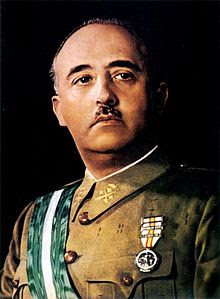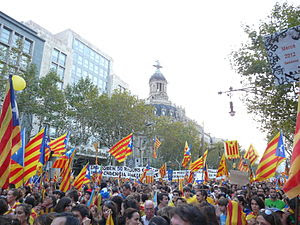Quim Monzó
Al pot del cafè, no
S’albira un “esdeveniment sistèmic” d’una magnitud semblant a la de la crisi financera de fa set anys
Ahir, a La Contra, Ima Sanchís va publicar una entrevista al consultor financer independent Martin Armstrong. Si algú se la va perdre, humilment li recomanaria que la recuperés perquè és interessant de la primera ratlla a l’última. Hi ha dos punts que m’han fet rumiar. Un, quan explica per què cada cop més països anuncien que tenen previst eliminar els bitllets de banc i les monedes (“perquè funcionem electrònicament a través dels bancs i, així, no tinguem capacitat de maniobra”). Dos, la seva predicció de futur: “L’octubre d’aquest any començarà una crisi del deute dels governs que assolirà el punt àlgid el 2017, i aquests es veuran forçats a ser més agressius amb els ciutadans per mantenir el seu poder, amb més impostos i suprimint en la mesura del que sigui possible el dret de vot”.
Aquesta predicció que a l’octubre n’hi haurà una de grossa m’ha fet pen sar en una altra entrevista que fa uns dies vaig llegir a The Daily Telegraph. Ian Spreadbury, gerent d’una de les més grans empreses de bons i fons d’inversió del Regne Unit, ha advertit els ciutadans que, en cas de voler invertir, diversifiquin -allò de no posar tots els ous al mateix cistell- i comprin or i plata. Els seus vaticinis són més a llarg termini que els d’Armstrong, que diu que el patapam serà aquest octubre. Spreadbury prediu que encara passaran uns cinc anys. La sorpresa de l’entrevista és quan anuncia que ha arribat el moment de tenir diners en efectiu, “amagats sota el matalàs”. Segons aquest senyor, s’albira un “esdeveniment sistèmic” d’una magnitud semblant a la de la crisi financera de fa set o vuit anys. El seu consell sorprèn perquè els que es dediquen als fons d’inversió no diuen mai això. El seu objectiu és que inverteixis, no que tinguis els diners a casa.
Ell proposa sota el matalàs, perquè és la frase feta i perquè, segles enrere, efectivament la gent amagava quantitats considerables de diners dins dels matalassos (no a sota), per evitar que els lladres els trobessin. (El meu avi andalús, que no havia trepitjat un banc en sa vida, els tenia en una vella caixa de sabates.) Spreadbury també hauria pogut dir “sota una rajola”, que era un altre truc habitual. Sovint a les cases hi havia una rajola que ballava. N’hi havia prou de treure-la amb cura, posar-hi els diners dins i tornar-la a col·locar. Altres possibilitats són una ampolla de plàstic perfectament tancada dins de la cisterna del vàter (útil també per amagar-hi droga) o dins d’un pot hermètic enterrat en un test gros, d’aquests d’oliveres o tarongers de terrassa. Qualsevol d’aquestes opcions és bona, però la millor de totes és tenir una bona biblioteca. Quan els lladres entren a un pis i veuen absoluta ment totes les parets plenes de llibres fan mitja volta i se’n van per on han vingut. Des de fa temps han comprovat que qui gasta tant en llibres no s’ho gasta en joies i, si té diners a casa, és una misèria.
::::::::::::::::::::::::::::::::
L’economista Martin Armstrong preveu que l’independentisme augmentarà fins al 2020
Armstrong analitza l’evolució del moviment sobiranista des del 1469
Redacció | Actualitzat el 05/06/2015 a les 10:40h
El prestigiós economista nord-americà
Martin Armstrong va publicar al seu
blog el 28 de maig un article on analitza el moviment independentista al llarg dels anys i explica breument la història de Catalunya des de 1469 -amb el matrimoni dels Reis Catòlics – fins al segle XXI. Armstrong utilitza el seu
Economic Confidence Model per portar a terme aquest estudi: analitza l’evolució del moviment independentista prenent com a referència intervals de 8,6 anys.
Armstrong assegura que un dels canvis de tendència més significatius es va produir el 2011, un any abans de la manifestació multitudinària a Barcelona a favor de la independència, la qual vas posar de manifest un clar augment del corrent sobiranista. Prenent com a referència aquesta data i aplicant l’Economic Confidence Model, l’economista preveu una tendència a l’alça del moviment independentista, que arribarà al seu punt àlgid el 2020.
COMENTARIS:
Castella go home
Anònim, 05/06/2015 a les 15:43
coincideix amb A. Delofeu y la seva matemática de la Historia
Alexandre Deulofeu, de lectura obligatoria
fixeu-vos en la data 1469
Anònim, 05/06/2015 a les 23:48
lo dit, la data, desde 1469 esten ofegats pel nacionalisme centralitzat opressor, esperem que molt abans d’aquesta data comentada siguem un país lliure. Visca Catalunya !!!!
Alexandre Deulofeu va vaticinar la fi d’Espanya pel 2029.
Brauli Tamarit, 06/06/2015 a les 00:36
Alexandre Deulofeu (1903-1978), va desenvolupar una teoria cíclica dels imperis i les civilitzacions que li va permetre, als anys 50, vaticinar que pel volts de l’any 2000 la Unió Soviètica es desintegraria i les dues Alemanyes es reunificarien.
També va dir que tot imperi té uns 550 anys de durada. El final aproximat de l’imperi espanyol escau l’any 2029, però poden ballar uns anys amunt o avall.
Podeu veure el lloc web dedicat a la seva Matemàtica de la Història a
http://deulofeu.org
, amb el seu quadre dels imperis a:
http://www.deulofeu.org/quadre-dels-imperis/
::::::::::::::::::::::::::::::::::::::::::::::::::::::::::::::::
DOCUMENTALS > ESTRENES’ 15 > EL VISIONARI. L’HOME QUE PREVEIA L’ECONOMIA MUNDIAL
Setembre
EL VISIONARI. L’HOME QUE PREVEIA L’ECONOMIA MUNDIAL
Marcus Vetter
Alemanya (2014)
100 minuts
Polític
VO en anglès subtitulada en català
Tràiler

Ficha Técnica
Companyia productora: Filmperspektive GmbH
Música: Sven Kaiser
So: Aljoscha Haupt
Edició: Marcus Vetter
Fotografia: Georg Zengerlin
Productor executiu: Ulli Pfau, Marcus Vetter, Michael Heiks
Director: Marcus Vetter
SINOPSI
És possible que un ordinador pugui predir l’economia mundial? Durant els anys 80, Martin Armstrong, un consultor de finances, va dissenyar un model de predicció basat en el número pi. La seva reputació mundial va fer que els banquers més poderosos de Nova York el convidessin a formar part del seu grup per manipular les tendències dels mercats. A finals dels 90, l’FBI va entrar a casa seva per requisar-li els ordinadors i acusar-lo d’haver estafat 3.000 milions de dòlars. Va passar 7 anys a la presó.Es tractava d’un intent d’amenaçar-lo? Volien evitar que fes públic el veritable esquema piramidal en què s’ha basat el deute mundial durant dècades? Les prediccions d’Armstrong fa anys que indiquen que l’1 d’octubre de 2015 hi haurà una crisi del deute que trasbalsarà l’economia mundial. Es complirà el pronòstic?
EL DIRECTOR
Marcus Vetter va néixer a Alemanya el 1967. Va estudiar economia i teoria i pràctica de la comunicació. Des de 1994 ha treballat com a editor de televisió, productor i director. Ha guanyat diversos premis internacionals i els seus films s’han exhibit a festivals de tot el món. Ha dirigit The Tunnel (1999), My Father the Turk (2006), Heart of Jenin (2008), Hunger (2009), Cinema Jenin (2011) i The Court (2012).
PREMIS I FESTIVALS
ZagrebDox – Croàcia, 2015
Thessaloniki Documentary Festival – Grècia, 2015
Belfast Film Festival – Regne Unit, 2015
DocsBarcelona – Espanya, 2015
Transilvania IFF – Romania, 2015
Docville – Bèlgica, 2015
Galeria d’imatges
:::::::::::::::::::::::::::::::::::::::::::::::::::::::::::
http://invertiryespecular.com/tag/martin-armstrong/
Martin Armstrong, experto estadounidense en ciclos económicos, asegura que el euro tiene los días contados debido a que la moneda única europea surgió con una “herida de nacimiento” provocada en el momento mismo de la formación de la Eurozona. Recordemos que éste experto ya predijo el Lunes Negro de 1987 en el mercado de valores de EEUU, así como la crisis financiera rusa de 1998.
En una entrevista publicada la semana pasada en un periodico alemán, Armstrong afirmaba que el riesgo del colapso del euro es muy alto, de al menos un 90% y que según sus cálculos ésto sucederá el 1 de octubre “debido a los errores en la creación de la moneda única, en la actualidad el sistema bancario de la Unión Europea es muy inestable. Manténganse alejados de los bonos de los Gobierno europeos, que están irremediablemente sobrevalorados. Para que el euro cuente con alguna oportunidad frente al dólar, debía haberse creado desde el principio un mercado de deuda único. Las grandes sociedades de inversión quieren invertir en deuda pública europea unitaria y no en deuda alemana o títulos italianos por separado“, explicó el gurú de las finanzas.
Leer más en: http://invertiryespecular.com/tag/martin-armstrong/
:::::::::::::::::::::::::::::::::::::::::::::::::::::::::::::
http://www.armstrongeconomics.com/archives/31032
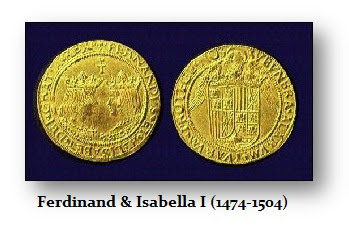
The formation of Spain dates back to the marriage of the Catholic Monarchs Queen Isabella I of Castile and King Ferdinand II of Aragon (Catalan). They were both from the House of Trastámara and were second cousins, being both descended from John I of Castile. They married on October 19th, 1469 (1469.8), in the city of Valladolid. It was this marriage that united both kingdoms under the same crown and thus creating the modern state of Spain.
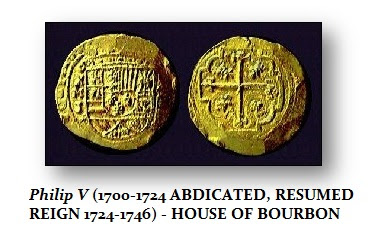

Today, there has been a rise in separatist movement in Spain to redivide the nation that was once formed by this marriage for political power. The Catalan Independence Movement or the Catalan Separatist Movement is a political movement, derived from Catalan nationalism, which supports the independence of Catalonia or the Catalan countries from Spain and France. This region was a coastal territory of the Crown of Aragon, However, the Crown of Aragon lost distinctive rules, institutions and laws at the end of the War of Spanish Succession in 1714, when Philip V (1683 – 1746) of Spain issued the Nueva Planta decrees, a centralized Spanish rule by sheer political force. Catalan lost its identity from a legal perspective at that moment.
There is little doubt that the roots of independence in Catalonia runs deep for there is not merely a different culture, but also a different language which separates the people from the rest of Spain. The first serious struggle for Catalan independence began to materialize after 19 intervals of the 8.6 year cycles dating back to 1640, there was the first unsuccessful Catalan Republic following the Reaper’s War. During the subsequent War of the Spanish Succession (1701–1714) the Catalans had hoped to salvage their institutions of home rule, despite the centralizing Bourbon pretender to the throne, rather than achieving outright independence.
In 1898, Spain lost its’ last major overseas colonies (Cuba, Guam, Puerto Rico, and the Philippines) in the Spanish–American War. This event actually began a rapid collapse of the economy and confidence evaporated. This was generally perceived as a disaster in Spain, undermining the credibility of both the government and its associated ideologies and almost leading to a military coup d’état led by Camilo Polavieja. It was the Spanish-American War that began the economic decline in Spain and from this event there began a rising tide of civil unrest.
The Spanish government attempted to reestablish its importance and sought to conquer Morocco (Melilla War) which failed. There was tremendous civil unrest caused great discontent at home which ended in a revolt in Barcelona, known as the Semana Tragica (July 25th – 2 August 2nd, 1909). This Catalonia revolt of the lower classes of Barcelona, backed by the anarchists, communists, and republicans, rose up against what they considered the unjust methods for recruiting soldiers. The government declared a state of war and sent the army to crush the revolt and the people in Barcelona, causing over a hundred deaths and the execution of Francisco Ferrer. The people tried to organize a national strike against the government, but this failed because the unions could only mobilize urban workers.

Eventually, the Spanish army was defeated by the natives of Morocco on July 22nd, 1921. The military discontent began to rise following this defeat. There was also a rising fear of a proletarian revolution, and a rising nationalist movement creating great civil unrest. Then on September 13th, 1923, Miguel Primo de Rivera (ruled 1923-1930), Captain General of Catalonia, orchestrated a coup d’état, after issuing a manifesto blaming the problems of Spain on the parliamentary system. He deeply believed that it was the politicians who had ruined Spain and that governing without them he could restore the nation.
Alfonso XIII backed the General and named him Prime Minister. Primo de Rivera and then proceeded to suspend the Constitution and assume absolute powers as a dictator abolishing all other political parties. During this time, he greatly increased government spending on business and public services, which caused his government to go bankrupt. He lost the support of the military and faced serious health problems. Opposition to his regime was so great that Alfonso XIII stopped supporting him and forced him to resign in January 1930
In 1928 exiled Catalans in Cuba from the coup d’état of 1923, drafted a Provisional Constitution of the Catalan Republic. It would come to a head with the 1931 Sovereign Debt Crisis. It was at this time when we begin to see the formation of the first political parties to define themselves as pro-independence for Catalonia. Then it was during the First World War when Catalan Volunteers bore the pro-independence flag when they fought on the Allies’ side. The same ensign headed a text addressed to president Wilson late in 1918, calling upon him to review the Treaty of Utrecht. They wanted the United States to support the repeal of the treaty that allowed Spain to abolish Catalonia’s home rule inside a centralized unitary State.
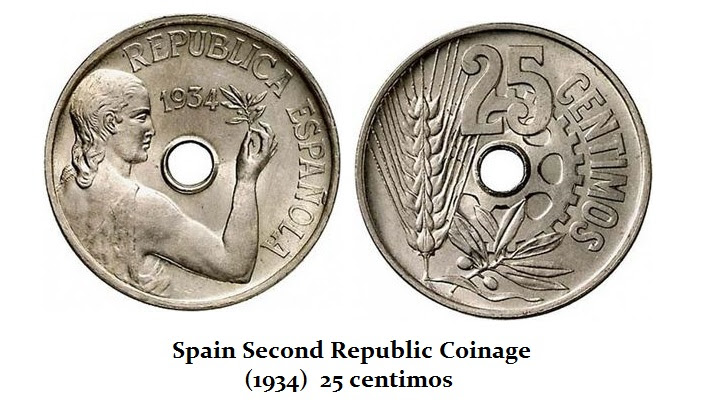
The beginnings of separatism can be traced back to 1931 and the Sovereign Debt Crisis that moved a coalition of Catalan nationalist parties to form and was the most voted force in Catalonia in the Spanish municipal elections that triggered the proclamation of the Second Spanish Republic. With the fall of the monarchy in 1931, by 1932 Catalonia was granted a statute of autonomy and home rule institutions, which lasted until the Spanish Civil War which began in July 1936 and officially ended with Franco’s victory in April 1939 and his subsequent dictatorship.
The Spanish Civil War, was a civil war fought from 1936 to 1939 between the Republicans, who were loyal to the democratic Spanish Republic, and the Nationalists, a rebel group led by General Francisco Franco (1892 – 1975). The Nationalists won, and Franco ruled Spain for the next 36 years, from 1939 until his death in 1975.
The Franco dictatorship was based its public ideology on Spanish Nationalism and Catholicism, abolished home rule and discouraged regional cultures. Following Franco’s death in 1975 and the Spanish transition to democracy, Catalan autonomy was restored in 1977.
Catalan Nationalists have governed the region most of the time since then, and those calling for full independence have had their parliamentary group since 1980. Nevertheless, there has been a significant shift since the 2011.45 turn in the Economic Confidence Model. Open demonstrations began on September 11, 2012 and September 11, 2013 there were massive demonstrations with more than 1 million participants calling for independence for Catalonia.
Catalonia is committed to a referendum on independence, and 55% of it is composed of openly separatist parties. The Estelada flag, in its blue and red versions, has become its main symbol.
Spain itself has followed the Economic Confidence Model rather nicely. The whole independence movement was set off by the Sovereign Debt Crisis of 1931. The discontent rose sharply and this ultimately led to the Spanish Civil War starting in 1936.
The the beginning of the economic problem in late 1929 followed by the Sovereign Debt Crisis in 1931, the movement toward civil unrest and the independent movement of Catalonia followed the 8.6 year frequency as well. This 51.6 year wave reached its peak in 1977 and that is when we find following Franco’s death in 1975, that there was not just a Spanish transition toward democracy, but it was precisely on time for Catalan autonomy was then restored in 1977.
We can see that the subsequent 8.6 year waves are:
1985.8, 1994.4, 2003, 2011.6, 2020.2, 2028.8 and 2037.4
It was from the 2011 turning point that there was a rising tide of independence movement with Catalonia to separate from Spain. One can easily see the cultural difference between Barcelona and Madrid. Barcelona is perhaps the cleanest city in Europe with wide streets and a vibrant culture that is distinctly different. It appears that we should expect the rising separatist movement to continue with the turn in the ECM 2015.75 for this will be 4.3 years from 2011.6 moving into a high for 2020.
This entry was posted in Europe’s Economic History and tagged Catalonia, Independentists, Isabella I of Castile, King Ferdinand II of Aragon, Nueva Planta, Separatist, Spain by Martin Armstrong. Bookmark the permalink.
—
Salut i independència!
(encara que sigui de joguina)
ESPAI LLIURE DEL MUNTATGE «SIDA»
«El present és d’ells; el futur és meu»
Nikola Tesla (1856–1943)

![]()











